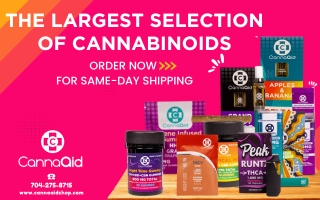1. Increase the Visibility of Your Products
It is essential to ensure your product lineup is easy to find in-store and online, as customers won’t buy what they can’t see. Try placing your products in prominent locations, such as at the front of the store, near checkout stands, and on the first page of your website. Additionally, use visuals to draw attention to them, such as eye-catching displays and graphics. These steps can make a big difference in helping customers find and buy your products.
Ultimately, increasing the visibility of your products leads to higher sales and more satisfied customers. So, if you want to give your retail business the boost it needs, make sure you’re putting effort into making your products stand out.
2. Create an Exceptional Customer Experience
Your shop should strive to create an enjoyable in-store experience that involves more than just buying and selling products. Not only does it increase the chances of customers making a purchase, but a positive customer experience also encourages return visits and positive word-of-mouth.
Whether it’s offering superior service, providing helpful advice and guidance, offering rewards and loyalty programs, or providing a pleasant in-store atmosphere — there are many ways to create an exceptional customer experience. Investing time and resources to ensure customers have a positive experience can help improve sales and increase customer loyalty.
3. Provide Adequate Employee Training
Well-trained employees are key to a successful retail operation. Training your staff on the latest sales techniques, product knowledge, and customer service will help them better engage customers and increase sales. Encouraging employees to ask questions and give feedback about the training will also ensure they are equipped to deliver excellent customer service and make the shopping experience positive. This, in turn, will result in increased customer satisfaction and greater sales.
4. Provide Adequate Employee Training
When it comes to improving sales, optimizing your pricing strategy is an important step. This involves determining the right price points for each product and making sure customers perceive your products as offering value for money. It’s also important to consider other factors, such as the cost of production, market trends, and customer demand.
You can adjust prices based on specific demand patterns or the performance of certain products. By leveraging data, you can identify trends in customer behavior and set prices that align with their buying habits. Additionally, pricing promotions like discounts and bundle offers can help drive customer engagement and encourage repeat purchases. Creating a flexible pricing strategy and staying in tune with the market will help you maximize revenue opportunities and build long-term success.
5. Utilize Customer Data To Drive Sales
Using the data collected from customers, retailers can better understand customers’ buying habits, preferences, and needs. This can help retailers tailor their products and services to better meet the needs of their customers. With this insight, retailers can create more effective marketing strategies and ensure that they deliver the right products and services to their customers.
Additionally, customer data can help identify opportunities for cross-selling and upselling, giving retailers more chances to boost their sales. With the right customer data in hand, retailers have the opportunity to create a lasting impression on their customers and drive long-term sales.
Retailers should focus on customer data, such as:
- Purchase history
- Demographics
- Product preferences
- Geographic data
Acquiring this data can be done through:
- Point-of-sale systems
- Surveys
- Customer service inquiries
- Focus groups
This information can help retailers determine which products are most popular with their customers, identify new customer segments, and develop targeted marketing campaigns.
6. Understand Your Target Market
When it comes to retail, knowing your target market is key to improving sales and reaching the right customers for your business. To successfully understand your target market, you need to identify the characteristics of your ideal customer, including age, gender, interests, buying habits, and more. Once you have collected this information, you will be able to create more effective marketing strategies to reach potential customers and tailor your product selection and services to their needs. It’s important to pay attention to trends and changes in your industry, regulation and legislation changes, as well as any changes in consumer behavior.
Establishing client personas is an effective way to help you identify customer needs and create marketing campaigns tailored to specific customers. To establish a buyer persona, research your customers’ demographics, behaviors, and interests to help you create an accurate portrait of them. Once you have a clear picture of your customers, you can craft campaigns that appeal to their needs and drive sales.
7. Offer Different Payment Methods
While cash is still widely accepted as payment, many retailers are now offering different payment methods to improve sales. This includes options like credit and debit cards, mobile payments, digital wallets, and even cryptocurrencies. By offering multiple payment options, retailers can make it easier for customers to purchase their products and services, increasing their chances of making a sale. Additionally, offering different payment methods can help build customer loyalty and trust in the retail business.
8. Offer Complimentary Services
To stand out from the competition and increase sales, consider offering complimentary services related to your products. Customers love feeling like they are getting something extra. For example, a smoke shop retailer might offer complimentary refills, gift bags, free vape juice, or even free vaporizer repairs and maintenance. This may encourage them to buy from you rather than from a competitor. Free delivery, extended warranties, and other services can also be great incentives to boost sales. But make sure that whatever you offer is something of value so customers appreciate the gesture.
Final Thoughts
It’s good news that in-store shopping is still the preferred method for many US customers, but this doesn’t mean you can just sit back and wait for them to come to you. You need to put in the effort to make your store worth their while once they’re inside.












